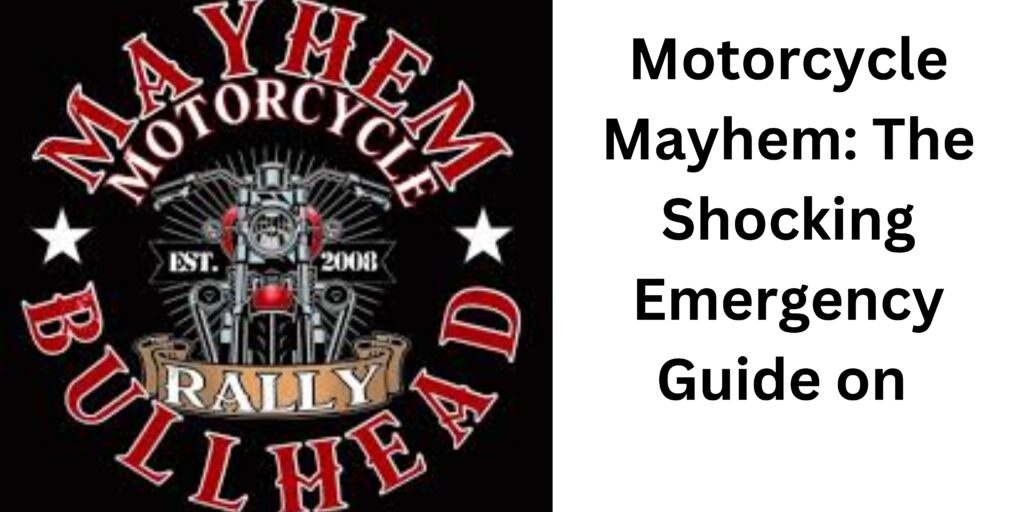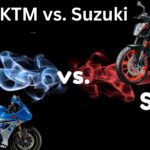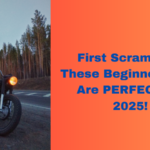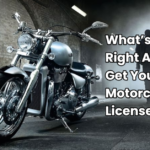introduction
Introduction
Losing your motorcycle key is a situation many riders dread. Whether you’re far from home or caught off guard by the panic, this frustrating moment can quickly turn into a full-blown emergency. But don’t worry—you’re not alone.In this guide, we’ll cover what to do if your motorcycle key is lost. We’ll share immediate steps and tips to prevent this from happening again. Read on to learn how to stay calm, retrace your steps, and explore practical solutions to get you back on the road as soon as possible.

1. The Moment of Panic: What to Do When You Realize Your Key Is Gone
When you first notice your motorcycle key is missing, your heart might race, and anxiety can set in. Here’s the simple truth: every problem has a solution, and the key (pun intended!) is to remain calm. Here’s what you should do immediately:
Step 1: Pause and Take a Deep Breath
- Why: Panicking won’t help you find your key any faster.
- How: Sit down, take several deep breaths, and try to clear your mind. This moment of calm will help you think clearly about your next actions.
Step 2: Visualize Your Last Moments with the Key
- Why: Recalling where you last had your key can be the first clue.
- How: Think back to the last time you used or saw the key. Were you putting it in your pocket at the coffee shop, or did it slip out when you got off your bike?
Step 3: Check the Obvious Places First
- Why: Often, the key is hiding in plain sight.
- How: Look in the ignition, in your jacket pockets, on the table, or in your bag. Sometimes, the simplest solution is the correct one!
2. Step-by-Step Guide to Finding Your Lost Motorcycle Key
Once you’ve calmed down, follow this systematic approach to maximize your chances of finding your missing key.
Step 1: Retrace Your Steps
- Detail: Start from the last place you remember having your key. Walk through your day step by step.
- Tip: Make a list of every location you visited, no matter how trivial it may seem. This can include your home, workplace, favorite cafe, or even a park.
Step 2: Check Common and Uncommon Spots
- At Home: Look in drawers, coat pockets, under furniture, in the laundry, or even in unexpected places like the kitchen counter.
- Outside: If you were out, check the areas you visited—such as your vehicle, restaurant tables, or seats in public transport.
- Extra Tip: Keys sometimes fall into crevices or slip behind furniture. Don’t forget to check these hidden spots.
Read more:
Step 3: Ask for Help
- Why: More eyes can spot what you might have missed.
- How: Call or visit friends, family members, or colleagues who might have seen your key. Ask staff at places you recently visited if anyone turned in a lost item.
Step 4: Use the Process of Elimination
- Why: Eliminating impossible locations helps focus your search.
- How: Mark off every place where you are sure the key could not be. This narrows down the areas you still need to search.
3. When to Involve Others: Reporting and Getting Professional Help
If your thorough search doesn’t bring the key back, it may be time to take further steps.
Contact Local Authorities
- When to Report:
- If you suspect the key was stolen.
- If you saw someone acting suspiciously near your motorcycle.
- How:
- Visit your local police station or call their non-emergency number.
- Provide a detailed account of when and where you lost your key.
- Ask if there is a lost and found department or if anyone has turned in a key matching your description.
Reach Out to a Professional Locksmith
- Why:
- A locksmith is experienced in handling lost keys and can often create a new one.
- They may also help you bypass the ignition safely if you need to move your motorcycle immediately.
- How:
- Look for locksmiths with good reviews, especially those who specialize in motorcycles.
- Be ready to provide the make, model, and year of your bike.
- Expect to pay a fee that can vary based on your location and the complexity of your bike’s locking system.
4. Temporary Fixes: How to Start Your Motorcycle Without a Key
While the ideal solution is to recover or replace your lost key, there are temporary methods you might consider in a true emergency. Remember: these methods should only be used if you are the legal owner of the motorcycle and have no other option.
Method 1: The Screwdriver Trick
- How It Works:
- Insert a small flathead screwdriver into the ignition.
- Try to turn it gently to mimic the action of a key.
- Caution:
- This method can damage your ignition. Use it only if you have no other alternative and plan to get it fixed right away.
Method 2: Hotwiring
- How It Works:
- This method involves bypassing the ignition wiring. It requires a basic understanding of your motorcycle’s electrical system.
- Caution:
- Hotwiring can be dangerous if you are not familiar with the wiring, and it might lead to more damage. It should only be attempted in extreme emergencies.
Method 3: Bump Key
- How It Works:
- A bump key is a specially crafted key that can open locks by “bumping” the pins inside.
- Caution:
- You must have a bump key already available, and using one improperly can damage your lock. This method is best left to professionals.
Method 4: Motorcycle Alarm Bypass
- How It Works:
- Some motorcycles have alarms with immobilizers. With the right technique, you may bypass the alarm to start your bike.
- Caution:
- The bypass methods vary greatly by model and can risk your bike’s electronic system. Always consult your manual or a professional.
Method 5: Exploiting Manufacturer Flaws
- How It Works:
- In rare cases, certain models have design flaws that let you start the motorcycle without a key.
- Caution:
- Not every motorcycle has this flaw, and exploiting it may void your warranty. Use this method only if you are sure it applies to your bike.
5. Replacing Your Lost Key: What You Need to Know
If your key remains lost despite your best efforts, replacing it might be your next best step. Here’s how you can go about it:
Step 1: Identify Your Key Type
- Traditional Keys vs. Electronic Keys:
- Traditional metal keys are usually less expensive and easier to replace.
- Electronic keys or fobs with chips may require special tools or dealer assistance.
- Tip: Check your motorcycle’s manual for details on your key type.
Step 2: Contact Your Motorcycle Manufacturer or Dealer
- Why:
- Manufacturers often have key codes on file.
- They can guide you through the replacement process.
- How:
- Provide your motorcycle’s make, model, and year.
- You might need proof of ownership, such as your registration or purchase documents.
Step 3: Hire a Professional Locksmith
- Why:
- A professional locksmith can sometimes create a new key even without the original.
- How:
- Find a reputable locksmith with experience in motorcycles.
- Ask about their process and fees before you commit.
Step 4: Understand the Costs Involved
- Cost Range:
- Replacing a traditional key might cost between $10 and $50.
- Replacing an electronic key or fob could be more expensive—anywhere from $50 to $250, depending on your model.
- Tip: Contact your insurance provider first. Some policies cover key replacements.
6. The Importance of Spare Keys: Why You Always Need a Backup
If there’s one lesson to learn from losing your motorcycle key, it’s to always have a spare. Here’s why having a duplicate key is essential:
Peace of Mind
- Benefit:
- Knowing you have a backup eliminates the stress of potentially being stranded.
- How:
- Keep the spare key in a secure, accessible location such as with a trusted friend or in a hidden spot at home.
Cost Savings
- Benefit:
- Replacing a lost key can be expensive, especially if it involves professional services.
- How:
- A spare key is a small investment that can save you from significant expenses later on.
Time Efficiency
- Benefit:
- A spare key allows you to quickly resume your journey without lengthy delays.
- How:
- Store your spare key in an organized and memorable spot so that you always know where to find it.
Enhanced Security
- Benefit:
- A spare key reduces the risk of desperate measures like hotwiring, which can damage your bike.
- How:
- Keep your backup in a secure place separate from your motorcycle.
7. Preventing Future Mishaps: Tips to Keep Your Motorcycle Keys Safe
Prevention is always better than cure. Here are some practical tips to help ensure that you never lose your motorcycle key again:
Use a Distinctive Keychain
- Why:
- A large, brightly colored keychain makes your key easier to spot.
- How:
- Choose a keychain that stands out from your everyday items, so you’re less likely to misplace it.
Invest in a Key Finder Device
- Why:
- Key finders are small electronic gadgets that help you locate your keys quickly.
- How:
- Attach the device to your keychain. When you misplace your key, use your smartphone to trigger an alert sound from the key finder.
Establish a Designated Spot
- Why:
- Having a specific place to store your keys reduces the chance of losing them.
- How:
- Create a “key zone” in your home or workplace—a bowl, drawer, or hook that is always used for your keys.
Regular Check-ins
- Why:
- Habitually checking that you have your key can become a natural part of your routine.
- How:
- Make it a habit to check your pockets or bag for your key before leaving any location.
Consider Upgrading to Keyless Entry
- Why:
- Keyless entry systems eliminate the need for a traditional key.
- How:
- Modern motorcycles sometimes come with keyless ignition or start systems. These systems use a digital fob or fingerprint recognition, which can be a convenient and secure alternative.
8. Electronic Options: Keyless Entry Systems for Motorcycles
As technology advances, many riders are turning to keyless entry systems. These systems offer several benefits:
How Keyless Entry Works
- Operation:
- Instead of a traditional key, you use a digital fob or a fingerprint sensor to start your motorcycle.
- Features:
- Enhanced security features such as anti-theft alarms.
- Convenient, push-button start-up that eliminates the need to search for a key.
Benefits of Keyless Systems
- No More Lost Keys:
- With no physical key to misplace, you avoid the risk of being stranded.
- Improved Security:
- Digital systems can include alerts and tracking features that make your motorcycle safer.
- Ease of Use:
- Simply press a button or use your fingerprint to start your bike.
Considerations Before Switching
- Cost:
- Upgrading to a keyless system might involve an upfront cost, though many riders find the convenience worth it.
- Maintenance:
- Electronic fobs may require battery changes or software updates.
- Compatibility:
- Ensure the system is compatible with your motorcycle’s model before making the change.
9. Insurance Coverage: Can Your Policy Help Replace a Lost Key?
Many riders are unaware that their insurance policy might cover lost or stolen keys. Here’s what you need to know:
Review Your Policy
- How:
- Read your policy carefully or call your insurance provider to ask about key replacement coverage.
- Why:
- Some policies include coverage for lost keys, which can help reduce your out-of-pocket expenses.
Steps to Follow
- Document the Loss:
- Keep a record of when and how you lost your key.
- File a Claim:
- Follow your insurer’s process for filing a claim. This may involve submitting receipts and proof of loss.
- Extra Riders:
- If your current policy doesn’t cover lost keys, ask if you can add a rider for extra protection.
FAQ
Q1: What should I do immediately after realizing my motorcycle key is lost?
A1: First, take a deep breath and try to remain calm. Then, retrace your steps by thinking about the last time you had your key and checking common places such as your pockets, ignition, and bags.
Q2: How can I increase my chances of finding my lost key?
A2: Retrace your steps thoroughly, check every room or area you visited, and ask people around you if they have seen it. Don’t forget to check unusual spots like under furniture or in small crevices.
Q3: When should I call a professional locksmith?
If you have searched for a reasonable amount of time without success, or if you need to move your motorcycle urgently, it’s a good idea to contact a reputable locksmith who specializes in motorcycles.
Q4: Can I start my motorcycle without a key?
A3: If you have searched for a reasonable amount of time without success, or if you need to move your motorcycle urgently, it’s a good idea to contact a reputable locksmith who specializes in motorcycles.
Q5: How do I prevent losing my motorcycle key in the future?
A5: Invest in a distinctive keychain or a key finder device, establish a dedicated spot at home for your keys, check your keys regularly, and always keep a spare key in a safe location. Consider upgrading to a keyless entry system for extra convenience.
10. Learning from Others: Real-Life Stories and Lessons
Hearing about other riders’ experiences can help you learn what to do—and what not to do—if you lose your motorcycle key. Here are a couple of true stories:
John’s Lesson in Always Having a Spare
John loved riding. One day, he spent all day looking for his lost key. After he called a locksmith for a replacement, he realised a spare key was essential, not just handy. Now, John always keeps a duplicate key in a safe spot, saving him both time and stress.
Maria’s Experience with Temporary Fixes
Maria found herself locked out of her motorcycle during a busy day. In her desperation, she attempted a quick fix by using a screwdriver on her ignition. The method worked temporarily, but she soon learned that it could damage the ignition system, costing her more in repairs. Today, Maria relies on professional help and always keeps a spare key nearby.
Key Takeaway
- Plan Ahead:
- Invest in spare keys and consider electronic keyless options if they suit your lifestyle.
- Be Prepared:
- Understand the emergency methods available, but know when to call professionals to avoid further damage.
11. Conclusion: Getting Back on the Road
Losing your motorcycle key can be stressful, but it doesn’t have to ruin your day. By staying calm, following a systematic approach, and knowing when to seek professional help, you can quickly overcome this challenge. Remember:
- Always retrace your steps.
- Check the obvious and uncommon places.
- Don’t hesitate to ask for help from friends, family, or professionals.
- Consider investing in a spare key or upgrading to a keyless entry system for future peace of mind.
By following these tips and steps, you’ll be better prepared to handle a lost key situation and keep your ride safe and enjoyable. Safe riding!





